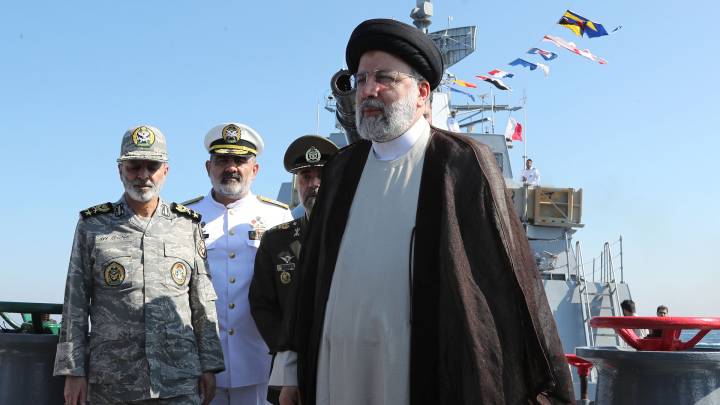All attention is currently focused on the deployment of Hamas missiles and their defense by the Israeli Iron Dome system. In fact, however, Hamas already appears to be deploying a new, even more insidious weapon: Kamikaze drones.
Israel and the Gaza Strip are in a state of emergency. While Hamas repeatedly fires salvos of hundreds of rockets (mostly of the Kassam type) at Israel, the Israelis try to repel them with their Iron Dome defense system. In retaliation, they also fly targeted airstrikes on detected missile positions and Hamas leadership cadres. The situation is getting worse and worse and more and more casualties are being suffered. In addition, the first riots are already taking place in Israeli cities.
In fact, Hamas has repeatedly succeeded in over-saturating the Israeli Iron Dome air defense system with the large number of missiles it has deployed. Despite the high success rate of the Iron Dome system (it is assumed that more than 90% of the HAMAS missiles were intercepted), individual missiles managed to break through the defense shield and hit Israeli territory. This increases the fear of the population, but at the same time the determination of the Israeli army.
Now, however, a much more dangerous development is on the horizon. This has the potential for further escalation with potentially far-reaching consequences. Over the past 48 hours, there have been increasing indicators that Hamas has been using not only unguided rockets, or sporadic anti-tank guided missiles, against Israel, but also kamikaze drones, loaded with explosives. This is analogous to the Qasef drones used by the Houthi rebels in Yemen or the Harpy2 drones used by Azerbaijan in Nagorno Karabakh. The use of steerable kamikaze drones by Hamas is a game changer.
All indications are that additional Hamas drones are being used during the missile salvos
It seems that the Al-Qassam brigades of Hamas are using a well-considered tactic. The unguided rockets used by them are fired in salvos of 100+ pieces. Immediately after their launch, they are detected by the Iron Dome radar. The radar recognizes which launched missile with its trajectory represents a potential threat and fires the appropriate defensive missiles. In this way, the system can be deployed with maximum efficiency, as sensors are aimed at the incoming missile salvos. But Hamas has another, much more insidious weapon system up its sleeve.
On the very first night of the attack, Hamas managed to hit an Israeli oil tank farm south of Ashkelon (four kilometers northeast of the security fence with the Gaza Strip) near the coast. A lucky hit from a fired Hamas rocket? The opposite seems to be the case. All indications are that additional Hamas drones are being used during the missile salvos. While all defense systems concentrate on the missiles, Hamas tries to steer kamikaze drones into Israel in low-level flight and thus harder to detect. With initial success, it seems.
Their small size makes them difficult to detect by defense system
The Israeli Air Force reacted quickly. By using F16 fighter jets, it managed to detect and shoot down a low-flying kamikaze drone for the first time a short time later. In return, Hamas released a first propaganda video. In it, Hamas fighters can be seen loading drones onto launch pads and firing them. The design of the drones, which the Al-Qassam brigade calls Shehab, is strikingly reminiscent of the Iranian Qasef drones used by the Houthis. Their characteristic is their small size, which makes them difficult to detect by defense systems due to their small radar cross-section.
The use by Hamas of kamikaze drones loaded with explosives and capable of being targeted represents a clear escalation of the conflict. The unguided missiles of Hamas can be countered relatively easily by the Iron Dome system. Nevertheless, individual missiles have already repeatedly succeeded in breaking through and hitting Israel. However, the use of low-flying steerable kamikaze drones loaded with explosives increases the threat enormously. If Israel does not succeed in eliminating this threat, its forces will invade Gaza.
Dr. Markus Reisner, PhD, is Colonel (GS) of the Austrian Armed Forces, a fellow of The Candid Foundation and author of "Robotic Wars".




